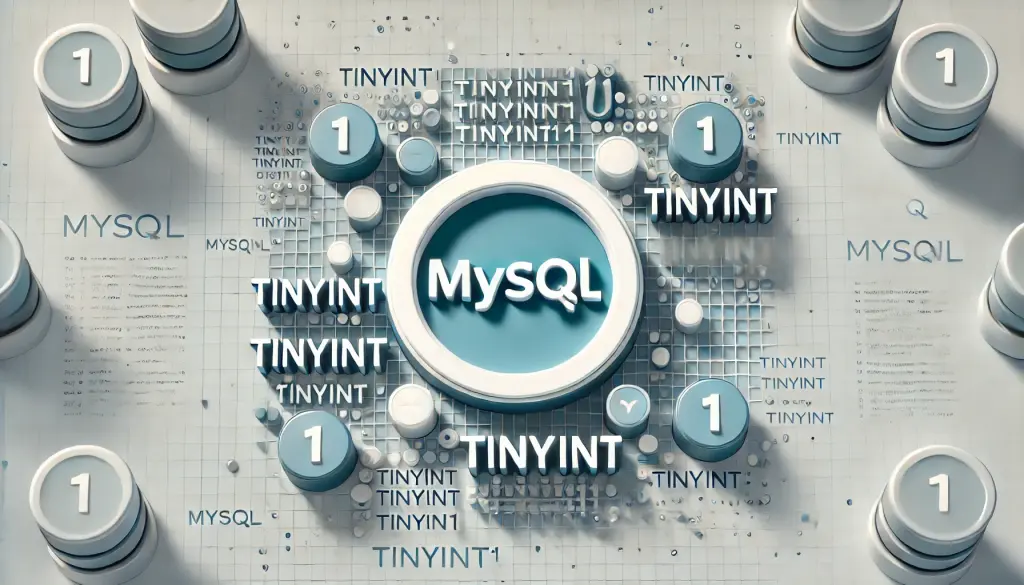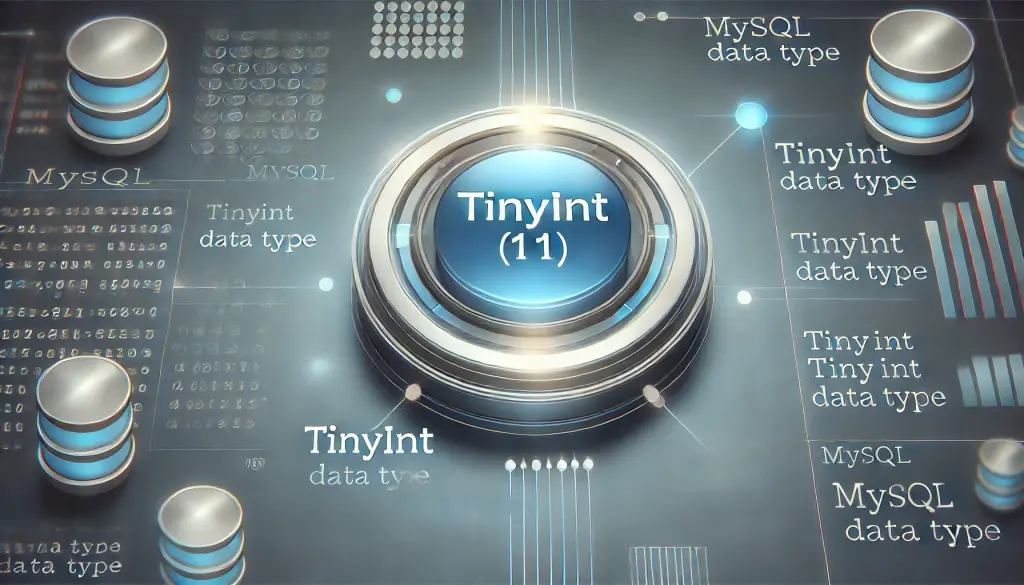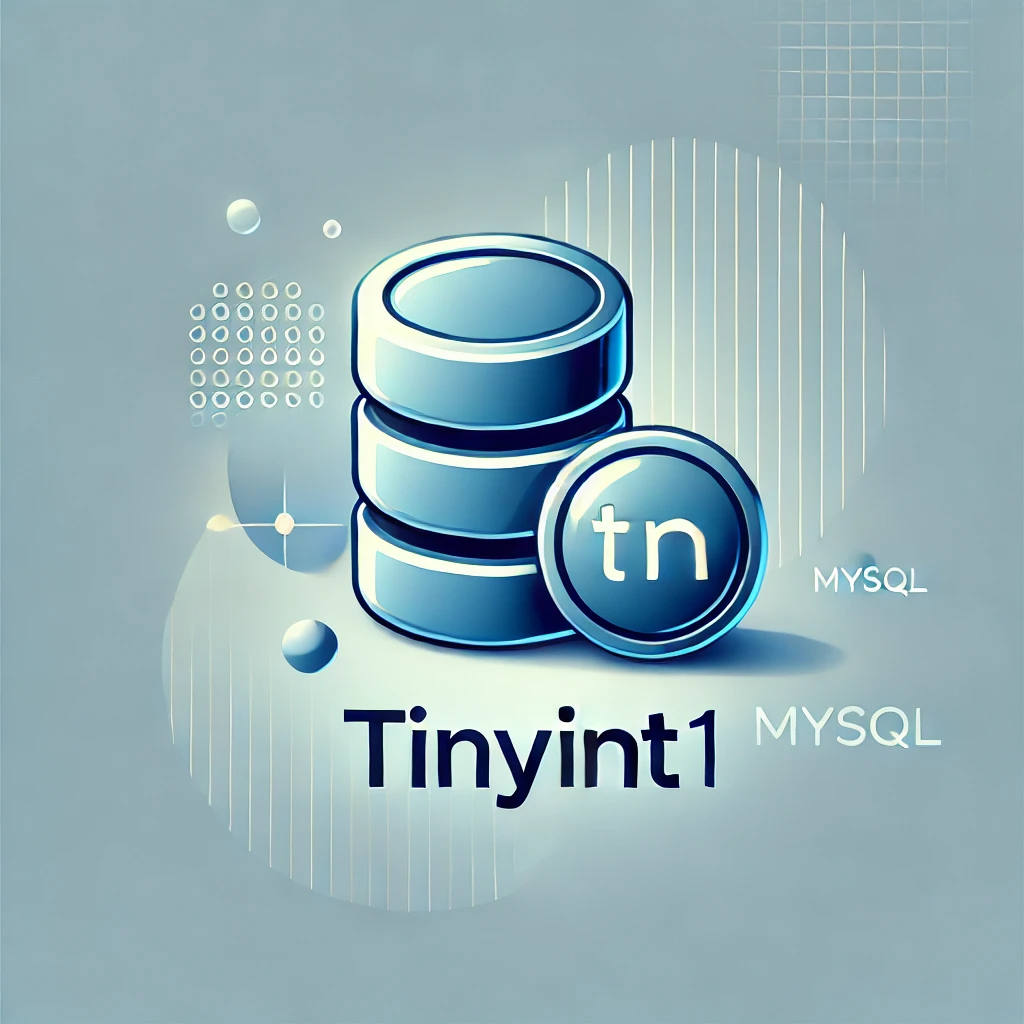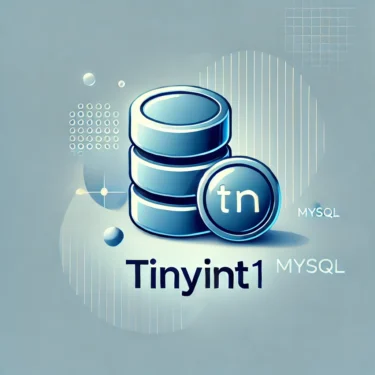1. What is MySQL TINYINT?
In MySQL, the TINYINT data type is used to store very small integers. TINYINT consumes 1 byte (8 bits) of memory and can hold values from -128 to 127 when signed, or from 0 to 255 when unsigned. TINYINT is mainly used to efficiently manage small numbers or Boolean-like values.
Key Features of TINYINT
- Memory Efficiency: Since
TINYINTonly uses 1 byte, it saves memory compared to other integer types such asINTorBIGINT. - Signed and Unsigned Options: Signed TINYINT can handle negative values, while the unsigned version expands the maximum range for positive numbers.
Example Usage of TINYINT
The following example creates a table that uses the TINYINT type to manage small numbers or flags:
CREATE TABLE user_status (
user_id INT PRIMARY KEY,
is_active TINYINT(1) NOT NULL DEFAULT 0
);Here, the is_active column is defined as TINYINT(1) and is used to indicate whether a user is active. A value of 0 means “inactive,” while 1 means “active.”
2. When to Use TINYINT
TINYINT is ideal for handling small integers and Boolean values. It is widely used to maximize database performance while saving storage space.
Using TINYINT as a Boolean
Since MySQL does not have a dedicated BOOLEAN type, TINYINT(1) is often used to store Boolean values. Typically, 0 is treated as “false” and 1 as “true.” This makes it simple to manage flags within your database.
UPDATE user_status SET is_active = NOT is_active WHERE user_id = 1;This example toggles the is_active value for the specified user, allowing for easy Boolean switching.
Managing Small Numbers
TINYINT is also useful for storing small ranges of numbers, such as product stock counts. If product quantities never exceed 255, TINYINT UNSIGNED is sufficient for handling the data efficiently.

3. Comparing TINYINT with Other Integer Types
MySQL provides multiple integer data types, but TINYINT is the smallest in size. In contrast, INT and BIGINT can store much larger ranges of values. The table below highlights the differences.
TINYINT vs INT
INT uses 4 bytes and supports values from -2147483648 to 2147483647, while TINYINT only uses 1 byte and handles values from -128 to 127 (signed) or 0 to 255 (unsigned). This makes TINYINT more memory-efficient for smaller ranges of data.
Other Small Integer Types
MySQL also offers SMALLINT (2 bytes) and MEDIUMINT (3 bytes). Each type has different value ranges, so choosing the right type depends on the size of the data you need to store.
4. Signed vs Unsigned TINYINT
In MySQL, a TINYINT can be declared as signed or unsigned. Understanding the difference ensures efficient and correct data management.
Advantages of Unsigned TINYINT
TINYINT UNSIGNED supports values from 0 to 255, making it suitable for data that will never require negative numbers. For example, user age or product quantities can be efficiently stored as unsigned TINYINT.
Advantages of Signed TINYINT
Signed TINYINT ranges from -128 to 127, making it appropriate when negative values are possible. For instance, storing temperatures or relative measurements often requires signed values.

5. Practical Examples of TINYINT
Here is an example of using TINYINT to manage product quantities in a table:
CREATE TABLE products (
product_id INT PRIMARY KEY,
quantity TINYINT UNSIGNED NOT NULL
);In this example, the quantity column uses TINYINT UNSIGNED and can store values up to 255. The NOT NULL constraint ensures that every product must have a defined quantity.
TINYINT is also useful for managing user statuses or flags. Especially in large datasets, using TINYINT can improve database performance by reducing storage overhead.
6. Summary and Best Practices
TINYINT is one of the most memory-efficient data types in MySQL, making it ideal for handling small integers and flags. Whether for Boolean values or small ranges of numbers, using TINYINT helps optimize both storage and performance in your database.



